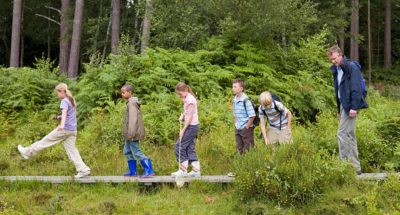
Gratitude Nature Walk
Students take a mindful walk in nature, noting what they are grateful for, and create a collaborative art piece of their experience.

Students take a mindful walk in nature, noting what they are grateful for, and create a collaborative art piece of their experience.
Students will:
Take some time to walk outside in nature. Walk in silence and observe nature all around you. Notice what you hear, smell, or feel. After your walk, quietly offer gratitude to one thing from your walk. How did this practice make you feel?
“Nurturing Gratitude From the Inside Out: 30 Activities for Grades K–8” was originally developed by The Inner Resilience Program, in partnership with the Greater Good Science Center and the John Templeton Foundation.
For the entire curriculum, click here.
Do you notice if students show more positive emotion and/or optimism after this practice? Are they expressing gratitude more often for nature?
Many studies with diverse groups have found that children receive psychological and physical benefits from being exposed to nature, including better attention, self-discipline, cognitive development, decreased levels of stress, better sleep, and lower blood pressure.
In addition, research suggests that gratitude is good for youth, going hand in hand with greater hope and optimism, higher satisfaction with life, and fewer health complaints.
Combining exposure to nature and gratitude has the potential to increase students’ academic achievement and well-being in the short-term, but also may help to create the life-long habit of spending time in nature—something that science has found to have numerous benefits for people across their lifespan.

Do you want to dive deeper into the science behind our GGIE practices? Enroll in one of our online courses for educators!
Comments